Inside Ben Kanute’s St. George Training Camp
Coming off an Olympic year, Ben Kanute decided the time was best to experiment and test himself in the 70.3 distance. At just 24 years of age, he knows he has a long career ahead, without a need to rush into longer racing, but with the Tokyo 2020 games not yet having qualification points begin until about late 2018, the 2017 season became a great opportunity to experiment.
The challenge for Kanute is doing enough to be prepared, but not taking away any of his fitness and speed for short course racing, as the WTS series is still his focus, and his eyes are still toward Tokyo. With the Mixed-Team Relay potentially on the table, Kanute knows medal chances are enhanced for US triathletes, and he wants to be a part of that.
With this in mind, we agreed to take an approach which alternated cycles of both larger aerobic volume, with lower volume, high-intensity phases. This approach would pay dividends, as Kanute set his 5K PR in February at a race in Phoenix, on an official USATF course, at 15:03, (15:12 the year before), finishing 2nd to American triathlete Kevin McDowell. Kanute would win the 10K 45 mins after finishing the 5K, in a time of 33:04, showing his strength and speed. All this was accomplished without any of the traditional means by which he had usually gained his fitness.
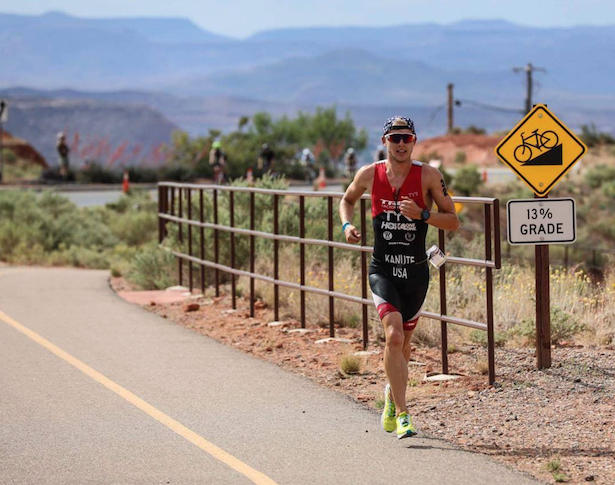
Kanute’s first race at the 70.3 distance was Puerto Rico, in March, which would also test his ability to perform in the heat, and a run course which is very challenging in cool conditions, much less hot. The race had a strong field, with Olympian and former 70.3 World Champion Andy Potts, headlining the field. We chose to have a very conservative strategy, and simply ride with Potts, force the field to chase, make them take all the risk in the heat, and learn how to race the distance. Taylor Reid was able to catch Kanute and Potts, and out-ran Kanute by 1:38, and Potts by 1:01, for the win. Potts would pass Kanute with one mile to go. Kanute would finish 3rd, in 3:51. A solid debut, but short of the goal of winning. The margin between ultimate success and solid performance is a fine line.
After Puerto Rico, we felt confident Kanute could handle the distance, seeing how close he was to winning his first attempt, with a conservative strategy, on a tough run course, in the heat, all things which have historically not matched his strengths.
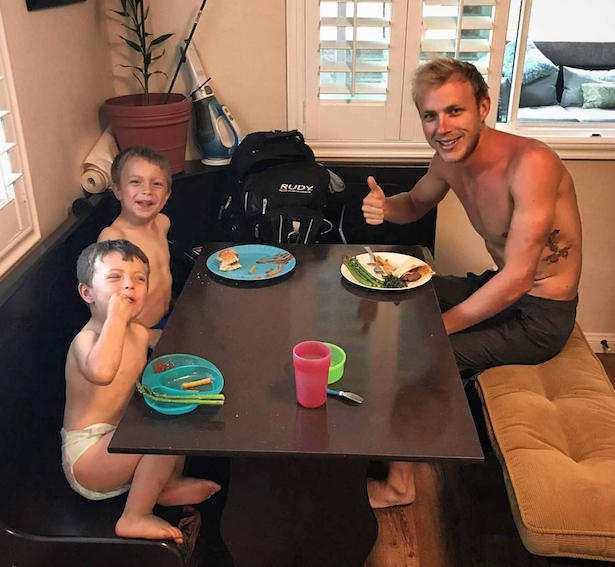
Kanute wrote some thoughts on how the race went, and the differences between 70.3 and WTS racing:
Nutrition and Pacing plan: "For Puerto Rico, my pacing strategy was to go by feel on the swim, and just be at or near the front without putting too much effort out. The bike plan was to hold right around 300w (Best Bike Split put this around 2:10, but I assumed it would be a bit faster since most people ride sub 2:10 on the course). This put me on the conservative end of my 70.3 watt zone. We determined this based off of my FTP, and workouts that I have done in the past few months (FTP is right around 340-350w, and I weigh 70kg). The run was more about pace and feel as well. Jim and I knew most people would not run faster than 1:17 on this particular course, so I was to start out right about 6 min pace and go from there. I wanted to build into the run rather than blow up.
The actual execution of the race played out very similar to what we planned. I was able to get out very fast and find clean water right away. My WTS swim speed helped with that just a bit, and when I saw I had a gap, I just shut it down a bit and swam a strong, but comfortable pace.
This set me up to come out of the water with about ten seconds lead, and plenty of time to chill on the relatively long run to transition. I was first onto the bike, and immediately fell into the 300w range. It felt pretty easy, but I wanted to keep it conservative to prevent any late race blowups. Surprisingly, I kept the lead and held these watts for the first 20 miles. At the turn around, I sat up and had Andy Potts come around to lead. From there I followed for the next 36 miles. I figured Andy knew how to pace a 70.3 better than pretty much anyone on the planet. When Taylor Reid and Paul Ambrose caught us and took the lead, I still just followed. Steady and comfortable was the plan for me, and my watts even fell a bit as I focused on nutrition and staying cool.
Once out onto the run, I tried to run slower than I thought. I was shadowing Reid for the first few miles, but the pace seemed just a bit too much early on. I decided to just run my own race and feel as strong as possible. I was able to keep a pretty even pace on a course that can get fairly hot, and is very hilly. Potts caught me with about a mile to go, and he just had a bit more turnover in the legs on the last uphill.
Nutrition played a very important role, and deserves its own section aside from pacing. While I constantly try to practice proper nutrition for everyday meals, the day before the race starts a more specific plan. I do a carb load with half of the carbs in before noon. I also try to stay away from fat and fiber, which slows down digestion. The morning of the race my breakfast is very simple consisting of apple sauce, sports drink and a bit of whey, and a banana…and a hefty serving of coffee. Before the swim, I take a few double caffeine gels to get going. On the bike I had three bottles of EFS (2 scoops per bottle). I took in the first two bottles in just over one hour. The second took me a bit longer to get through as I was also taking in fluid at the aid stations on the bike. The first gel came at an hour and a half into the race, and I took them every 45 min after (so just one more on the bike). On the run I took two, but they were at mile 3 and 9. I also made sure to take advantage of all the water, Gatorade Endurance, and ice at each aid station.
70.3 vs WTS: The tactics between the two were night and day for me. The 70.3 was all about me and conservation, while I usually race WTS races aggressively and react to people around me. I should take a few notes about the way I raced the 70.3 and apply them to WTS racing because I can be a bit too aggressive on the WTS circuit. Speed is the biggest difference between the two. In a WTS race, you try to break your competitors by going faster and making them work harder. It may be the first 300m of the swim, a surge on the bike, or a sprint in the run that gives you an edge over someone else. In a 70.3 it is more of a war of attrition. Most pros can go out any day of the week and do these paces, but doing them for so long in a race and on top of each other is where it starts to hurt. Nutrition also comes into play, and it is much more a game of strategy than just pure speed or power. This is not to say the WTS circuit does not use strategy, but it is more about reacting to the race than focusing on specific pacing and nutrition."
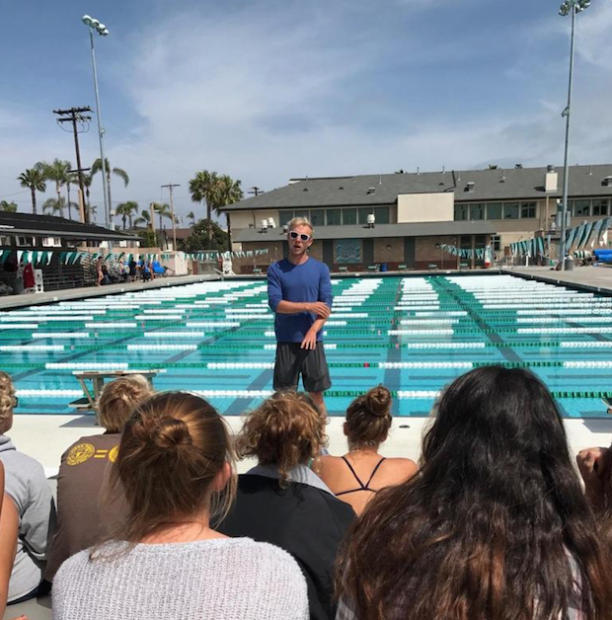
Kanute would have to recover quickly for a trip to the Southern Hemisphere to race New Plymouth World Cup and Gold Coast WTS, both sprint distance races, adding to the challenge of preparing for both 70.3 and WTS level events.
In preparation for St George 70.3, Kanute came to San Diego for us to work together, hands on, and tweak his final training to really match how his body was feeling, and what was the right amount of stimulus. He would complete his last big aerobic block in Tucson, (a 30 hour training week), while San Diego would serve as the intensity block, with a much-reduced volume, (21 hours total), but many of the efforts at 70.3 intensity or higher.
Here are three key workouts Kanute conducted in San Diego, one of each discipline:
Swim Workout
Kanute joined the Coronado High School Swim Team, (Vance is the Head Coach for the team), for their workout, and spoke to the team before practice about the importance of the mental approach to racing. Kanute discussed how he has handled set-backs and disappointments, and how he has persevered for success, what it took from him to make the Olympic Team.
The set that day was:
Warm Up: 1200 mixed
Main Set: 3x through 25-50-75-100-75-50-25 each one ALL OUT, each on 1:00, followed by 300 very easy between rounds.
Kanute would actually get faster thru the set, as his first round the 100 was in 57, rounds 2 and 3 he hit 54 and 53, all for short course yards.
The total for the day was a little over 4000 yards after the cool down. This was the last workout of the day for Kanute as well, (after the run workout below), so a solid set.
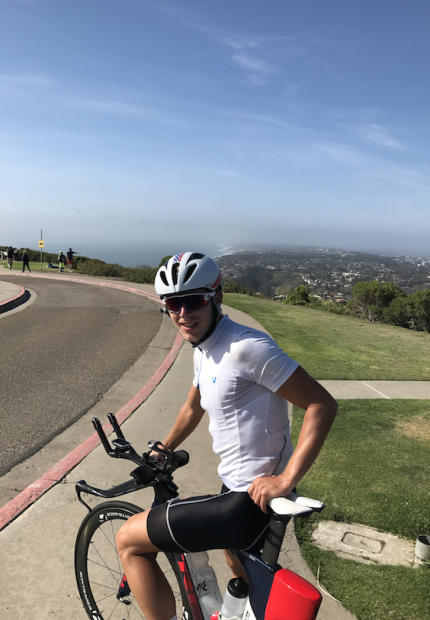
Bike workout
One of the famous climbs of San Diego is Mt. Soledad, where the community of La Jolla lies. Soledad Mountain Road is a climb with a variance of gradients, but overall is about 3.25 miles long, and a little over 4%, (with pitches much greater!) This was his second workout of the day, after a hard run intervals workout in the morning. Kanute conducted two climbs up the mountain ALL-OUT, with a full recovery descent between, and both times up the mountain were 10:42. Had he done all the way to the top, he would have grabbed the KOM on Strava for both, but he slowed at a point where Vance has a marker, about 20-30 yards before the top (before the speed bumps).
You can see the power file from this workout, with the first being at 413 watts, and the second 416 watts. Workout file HERE
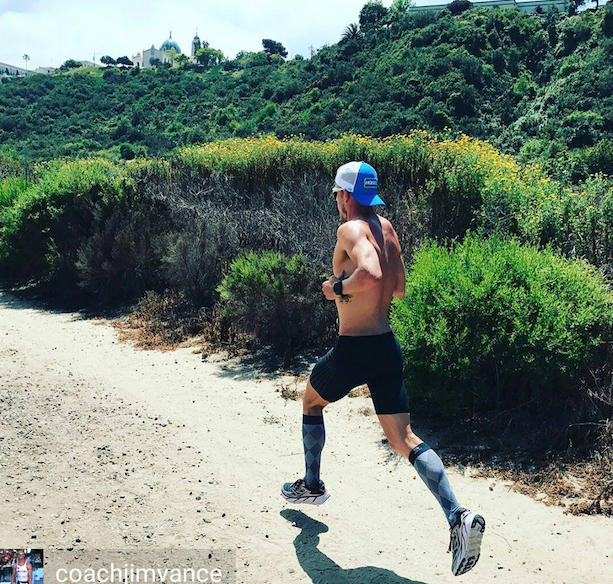
Run Workout
The day after his hard run workout and the Soledad bike efforts, Kanute conducted a speed endurance workout, where he ran 16x400m on a measured trail in a canyon right near Mission Bay called Tecolote Canyon. He ran all 16 between 68-72 seconds, on a 2:00 interval.
This proved to Kanute that despite tired legs, he still has the ability to run fast. You can see the workout HERE
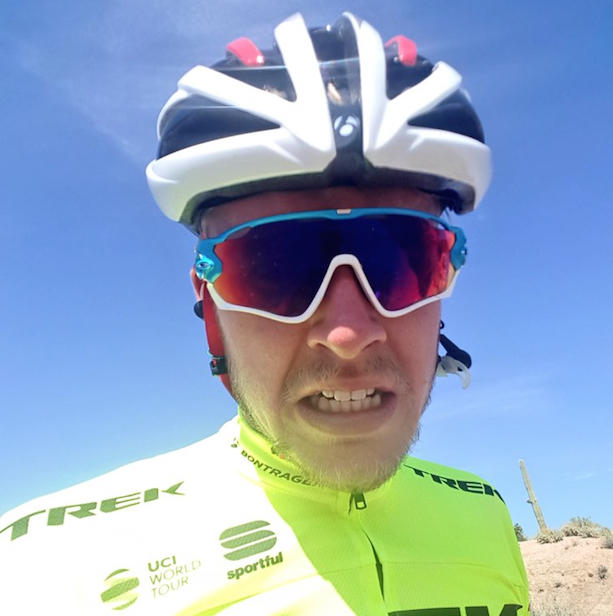
Outside of Workouts
Kanute also found time to do a Q&A sit-down with Bob Babbitt, for the Triathlon Club of San Diego. Here’s video of that interview, where he discusses his preparations for St George, and his experience at Puerto Rico 70.3:
Editor's Note: This training camp with Vance proved a success for Kanute in St George, as he placed 5th in a world class field. Only Alistair Brownlee, Lionel Sanders, Sebastian Kienle and Tim Don finished ahead of the youngster. You can find the St. George 70.3 race recap from Slowtwitch's Timothy Carlson HERE.
Ask Ben anything about his training lead up and race day in a ST Forum thread HERE.
About Jim Vance: Vance is an endurance sports coach, author and consultant based in San Diego, CA. He is the Head Coach for Formula Endurance, a USA Triathlon High Performance Team, focused mostly on developing top junior triathletes, as part of the Olympic Pipeline. Jim is also the Head Varsity Swim Coach at Coronado High School.
First photo provided with permission from Talbot Cox from 70.3 St. George North American Championships yesterday.
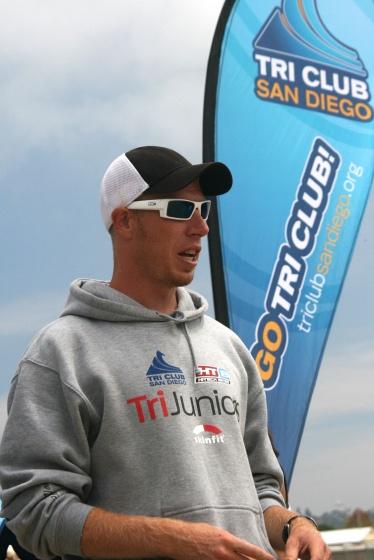


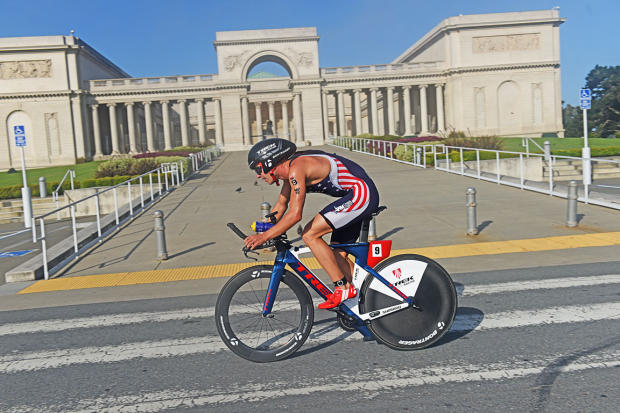
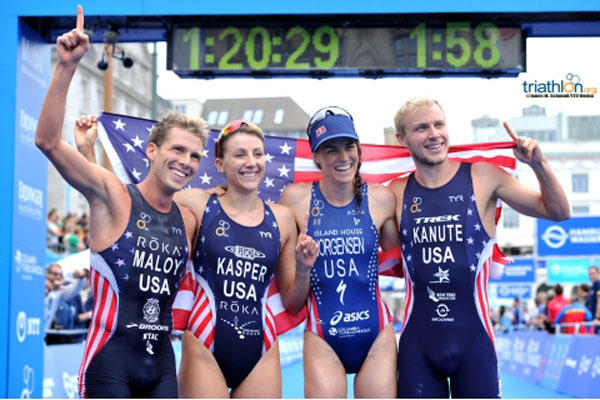
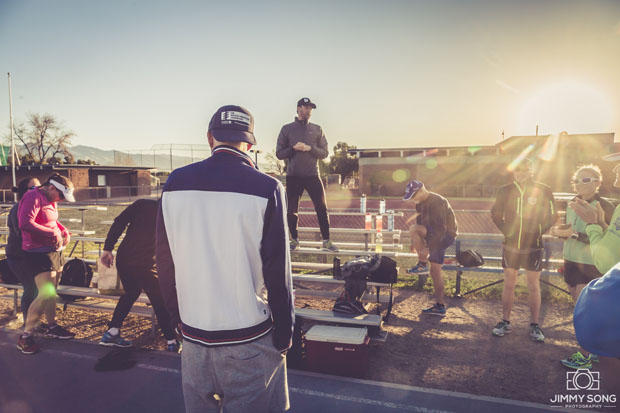
Start the discussion at slowtwitch.northend.network